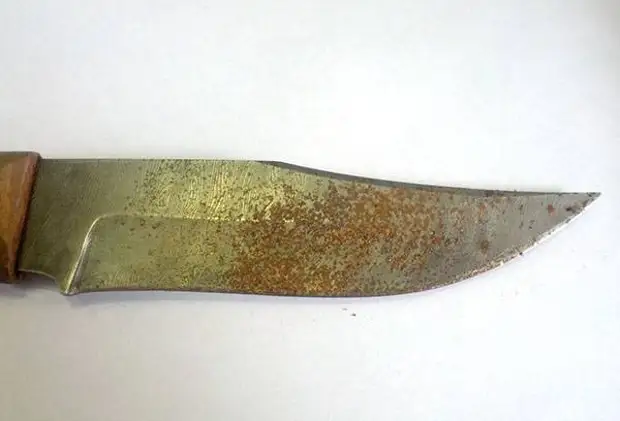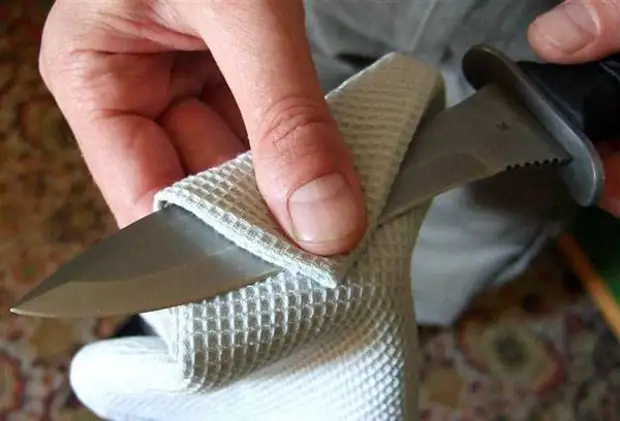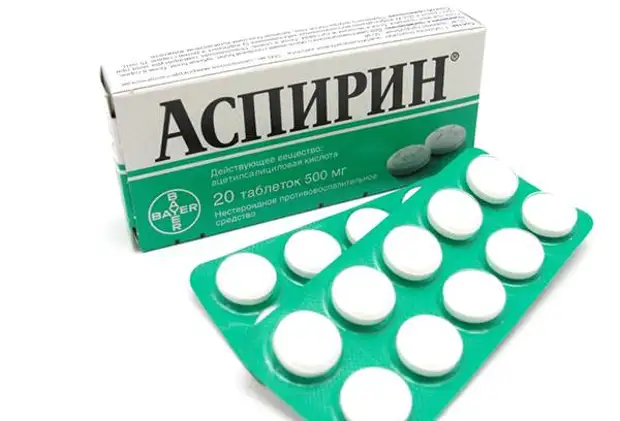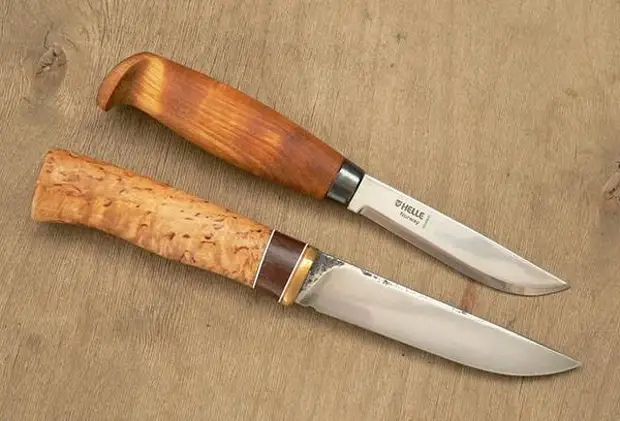
In order for the knife does not rust, it is necessary to protect it from moisture and periodically clean. This is a capital truth, but it is not always possible to observe such simple conditions at first glance. The knife can be forgotten somewhere or losing, and after some time to find already rusty. As a rule, the blade suffers in this case. Metal handles are rarely made, but this is found. There is a mass of ready-made chemical compositions to remove rust (corrosion), it is possible to do with infirred means, especially if the subject is not very damaged.
Chemical properties rust
In order to understand the principle of the action of cleansing rust funds, it is necessary to know what it is by nature. In the chemical essence, it is iron (III) hydroxide, an insoluble base neutralized under the influence of acid. Therefore, in order to remove rust stains with a knife blade, it is necessary to be treated with a substance containing acid. From the usual primary means you can remember:
- Potatoes (contains oxalic acid);
- onions (various organic acids);
- Vinegar (acetic acid).
There are other options with which you can get rid of this trouble. Much depends on how strong damage is. Maybe this is a light flare, and perhaps corrosion has already formed serious shells on the smooth surface of the blade. So or otherwise, to clean the knife from rust, remove the existing stains and protect it from the new ones, you need to go through all the steps of the procedure.

Mechanism for removing traces of corrosion
First of all, it is necessary to estimate the state of the knife, the degree of damage to corrosion. The whole procedure consists of the following steps:
- influence the steel elements of the knife containing an acid substance (or a special means);
- remove traces of rust from them;
- Clear blade;
- Processing with butter or wax to protect against repeated damage.
If corrosion formed on the surface of the sink blades, then it may have to be resorted to the processing of shallow emery paper with subsequent polishing. However, consider the mechanism more.
Council
Throughout the process, it is impossible to use water, special solutions that cleanse compositions should be used, etc.
Having found a rust knife on the blades, you need to do the following. To begin with, it is mechanically removed all the contaminants, thoroughly rub a knife with a rough cloth, having inamped it with cleaning fluid. Then the fluid must be applied on the blade, to impregnate with it with a cloth, wrap the knife and leave in this position for several hours. A vinegar or kerosene can be used as such a cleansing agent, and you can buy a special composition, for example, a rust converter.
After this time, you should expand the knife and remove everything excess with steel wool. After that, it is necessary to wipe it with a rough cloth, impregnated with oil, clean to full shine. To protect the knife from repeated damage to corrosion, it must be covered with a protective agent, such as oil or wax, then follow it, periodically clean, lubricate, do it regularly.
What if it is found that remove the spots did not fully work out? In this case, the procedure is to repeat. You can try to remove rust in other ways, which, fortunately, abound.

Aspirin can help remove rust with knife
Application of alternative methods
One way - it has already mentioned earlier - is the removal of rust with potatoes. Everything is simple here. To remove traces of corrosion with a knife, it must be stuck in potatoes and leave it for a day. After that, remove the tool, wipe with a rough cloth, impregnated with oil. In not the most launched cases, this is a fairly effective means. Solving acid contained in potatoes react with iron hydroxide, neutralizing it. In the same way proceeds the process of cleaning steel from rust with the help of a bouquet. In this case, onion juice is applied on the blade and withstands several hours, after which it should be removed along with the peeling rust.
You can remove rust stains in the same way using lemon juice or vinegar, even ketchup is used for this. The principle of operation is identical to those described above. Some successfully solve this problem with the help of carbonated water. There is an opinion that it is especially suitable for these purposes "Coca-Cola", because it contains phosphoric acid. It is necessary to lower the knife into the tank with a drink for several hours, then remove it and remove the rust with a metal brush or washcloth. At the end, polish the blade and protect it from moisture with the help of oil, wax or special means.
When dealing with rust, sometimes the most unexpected things, for example, Alca-Seltzer or Aspirin are sometimes going. Several tablets are dissolved in a small amount of water and lowered a knife blade into a solution by a quarter of an hour, after which they wipe the surface with coarse cloth and processed the knife, as in all other cases, in order to protect it from the subsequent damage.
What to do with a rusty subject and how to remove stains from it, which method for this will take advantage - to solve the owner of the knife. Buy the finished agent is perhaps the most win-win version, but experimenting with alternative methods is still worth it, especially if the case is not too launched. The main thing that is not allowed to repeat the appearance of rusty spots, as some of them are not easy to remove. In this issue, prevention decides everything.

Corrosion Prevention Measures
They say that the blade knife does not rust, they need to use it more often. This expression is not deprived of meaning. In constant use, the knife is regularly wiping, processed, is in plain form. Meanwhile, the stored and non-used instance is at risk of corrosion damage to no less. If you forget about it for a while and not to do the processing and cleaning of metal parts, then it rushes almost certainly. The fact is that moisture is contained everywhere, including in the air. Gradually settled on the blade surface, it will inevitably lead to the iron oxidation process. Protective formulations, by the way, cannot retain their qualities infinitely long, they must be periodically removed, clean the knife and apply.
Many owners of professional and hunting knives avoid preventive oil treatment. It is believed that the oil is able to enter into additional interactions with various substances and harming steel. In this case, the wax has proven itself as a more reliable means. In addition, the knife, which is used from the case of the case, should not be kept in a case or sheath. Any adverse conditions, first of all, the humidity of the air, in such a close space will be aggravated, and the damage process will accelerate. In addition, the beginning of the process can be skipped, simply not seeing it. It is better to start the knife when it comes time to take it with you on a journey, hunting, etc.
With proper approach and sufficient attention to the subject of corrosion appearance, you can avoid. It is better to spend time to prevent the problem than on the fight against it. Removal of rust and prevention of its appearance is the process of painstaking, requiring regularity. However, perhaps, this is one of the few cases when care for the thing is pleasure and has a soothing effect. Smooth, polished knife surface - the best reward of the owner for efforts.
